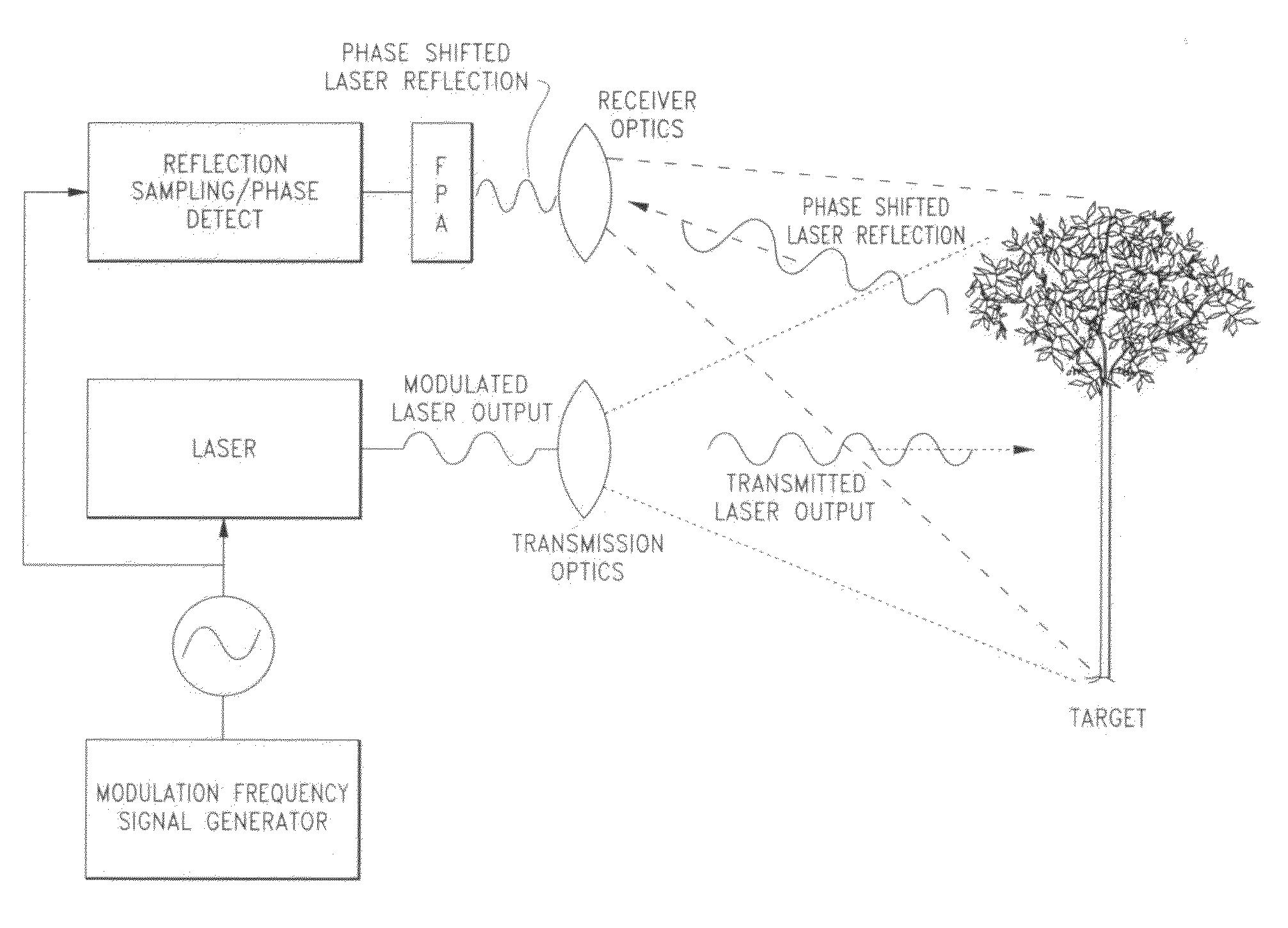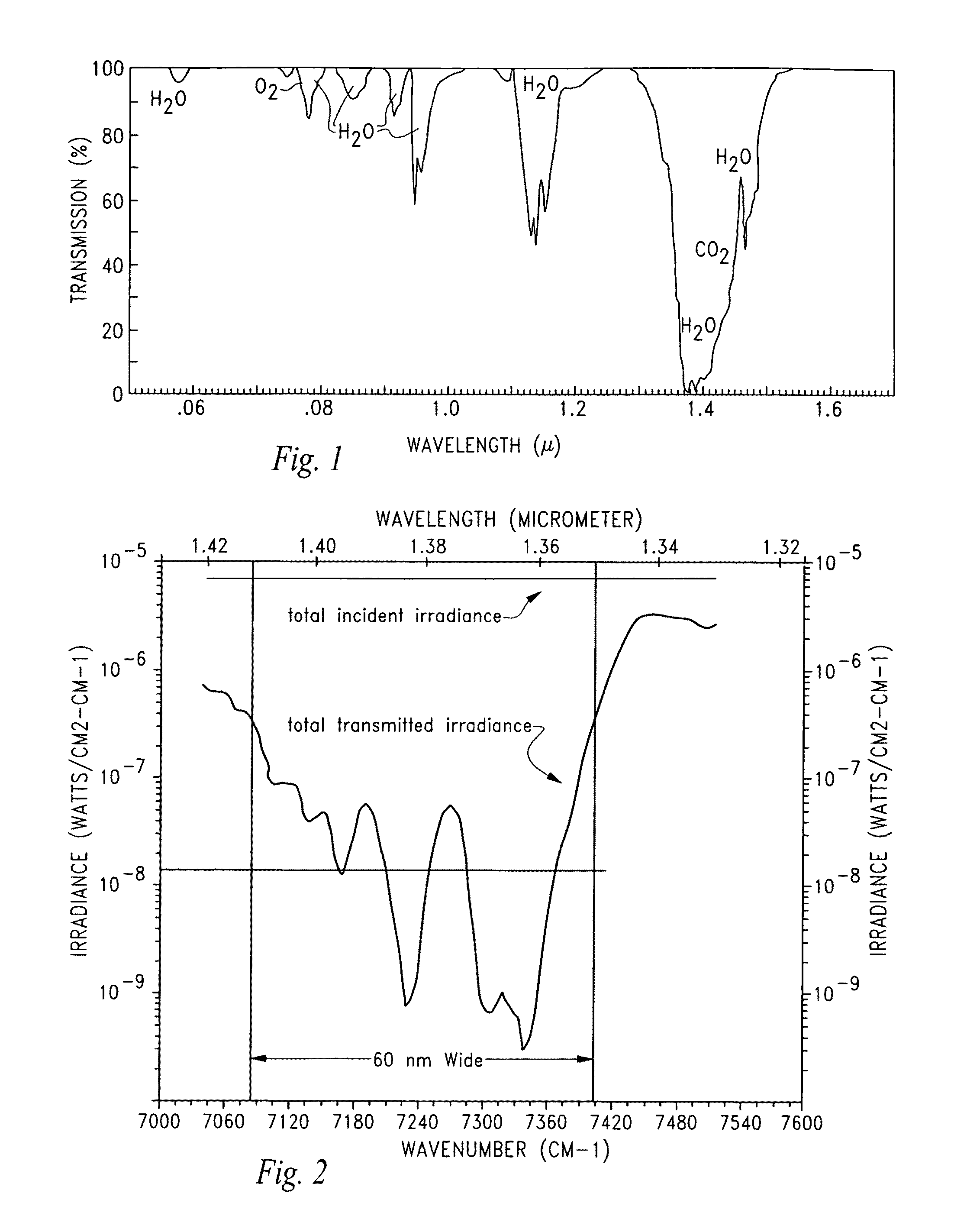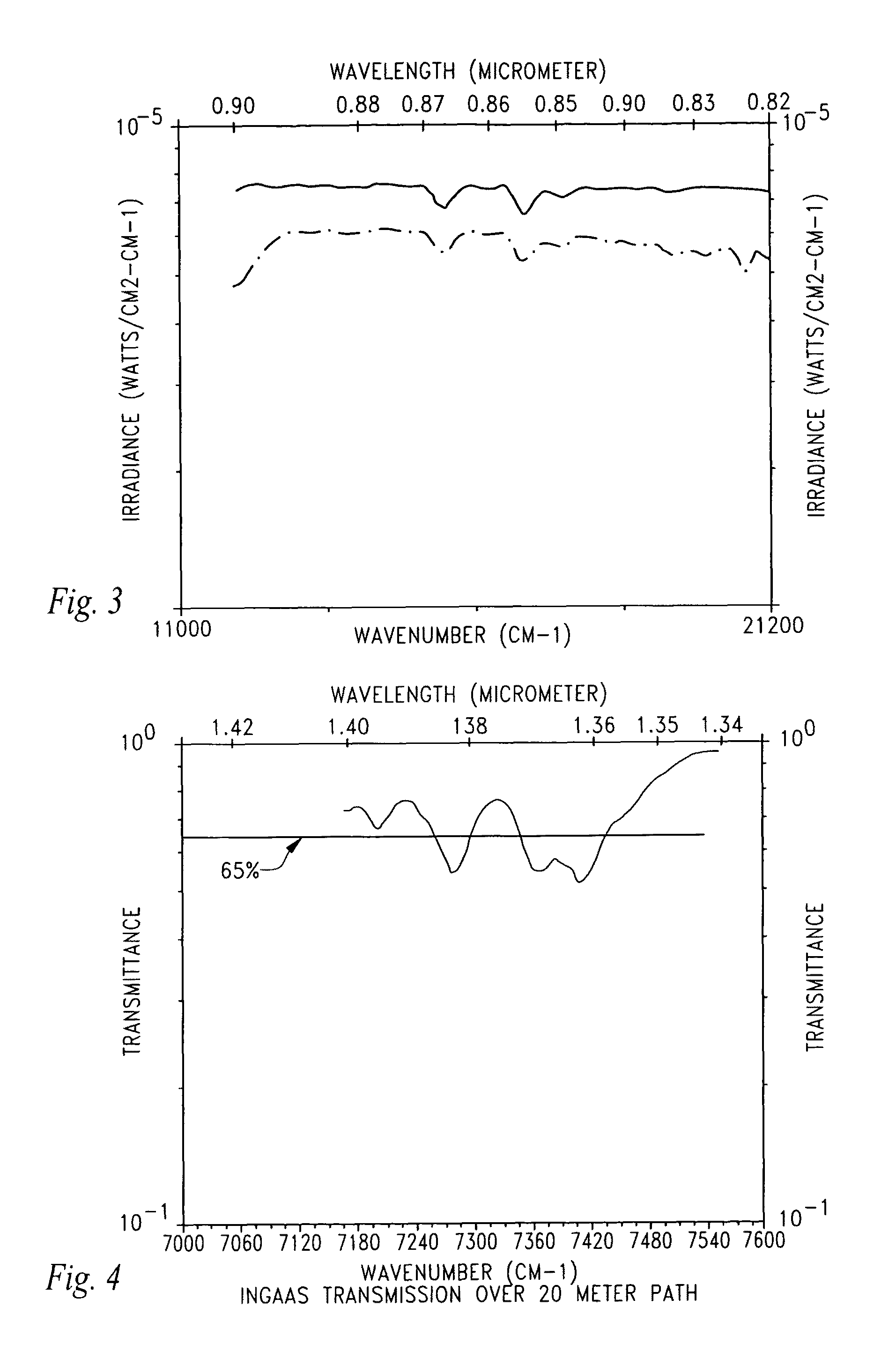Phase sensing and scanning time of flight LADAR using atmospheric absorption bands
a technology of phase sensing and scanning time, applied in the field of electronic imaging systems, can solve the problems of severe deformation of the performance of this and other staring and scanning ladar systems in outdoor operation, unavoidable reception of solar background ir, and degrade the signal-to-noise ratio of the system
- Summary
- Abstract
- Description
- Claims
- Application Information
AI Technical Summary
Benefits of technology
Problems solved by technology
Method used
Image
Examples
second embodiment
[0077]In FIG. 10b, the transimpedance amplifier's integration capacitor continually integrates over the frame and the results are sampled and held at various time periods. The sampling of the sample and hold capacitor can be performed randomly and the sine wave can be reconstructed in suitable processing electronics such as an FPGA.
third embodiment
[0078]In FIG. 10c, an in-circuit mixer is used to determine the phase of the return signal. The output of the mixer is a DC value that is proportional to the phase delay between the received signal and the original diode modulation drive signal. A mixing circuit desirably has very high gain and can be very selective in its amplification.
PUM
 Login to View More
Login to View More Abstract
Description
Claims
Application Information
 Login to View More
Login to View More - R&D
- Intellectual Property
- Life Sciences
- Materials
- Tech Scout
- Unparalleled Data Quality
- Higher Quality Content
- 60% Fewer Hallucinations
Browse by: Latest US Patents, China's latest patents, Technical Efficacy Thesaurus, Application Domain, Technology Topic, Popular Technical Reports.
© 2025 PatSnap. All rights reserved.Legal|Privacy policy|Modern Slavery Act Transparency Statement|Sitemap|About US| Contact US: help@patsnap.com



